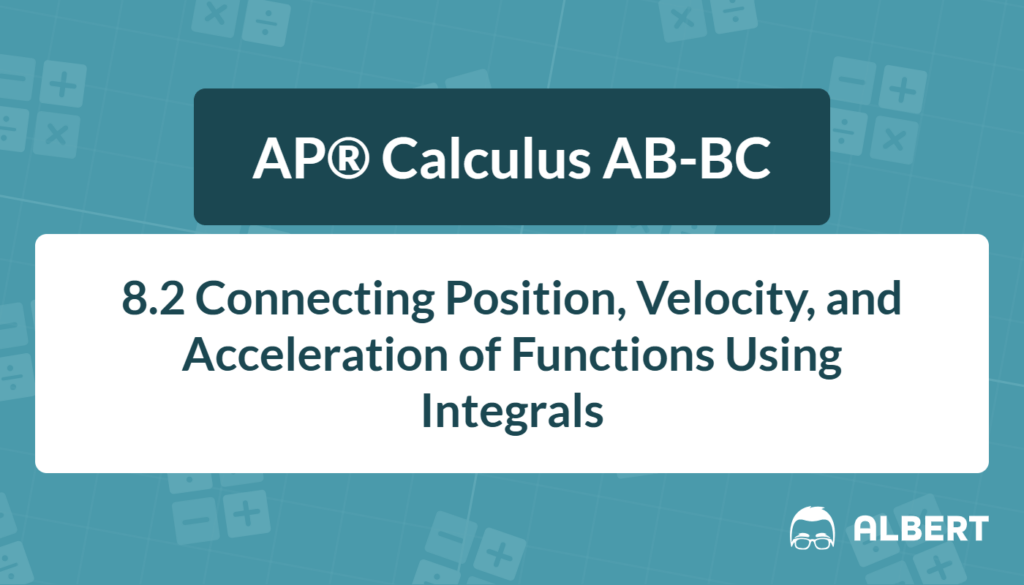Picture a skateboarder rolling along a straight sidewalk. First, the board glides east 4 meters, then it rolls back west 2 meters. The final location is only 2 meters east of the start, even though 6 meters of pavement passed under the wheels. That 2-meter net change is called displacement—and this example shows how to find the displacement in a simple situation.
The goal of this lesson is clear: connect velocity, integrals, and motion graphs to calculate displacement quickly and correctly. By the end, “how to find the displacement” will feel routine.
What We Review
Key Idea #1 – Displacement vs. Distance Traveled
Simple definitions
- Displacement: net change in position, can be positive, negative, or zero.
- Distance traveled: total ground covered, always non-negative.
Speed vs. Velocity
Speed ignores direction, while velocity keeps track of it. Therefore, negative velocity signals motion in the opposite direction.
Number-Line Walk Analogy
Imagine walking from 0 m to +3 m, then to –1 m. The end point sits 1 m left of the start, so displacement is –1 m, yet the distance traveled is 7 m.
Mini-Example 1
A hiker moves 5 km east and 7 km west.
- Displacement: 5-7=-2\text{ km}
- Distance traveled: 5+7=12\text{ km}
Therefore, direction truly matters!
Key Idea #2 – The Definite Integral of Velocity
Geometry Connection
The definite integral represents the signed area under the velocity curve. Positive velocity contributes positive area; negative velocity contributes negative area.
Notation and Units
If v(t) is in meters per second and time is in seconds, then
\int_{a}^{b} v(t)dt…returns meters (a position unit). That integral is displacement.
Step-by-Step Example 2
A particle’s velocity (m/s) is
v(t)=\begin{cases}3 & 0\le t \le 2\\-2 & 2< t \le 5\end{cases}Find displacement from t=0 to t=5.
- Sketch: a horizontal line at 3 above the t-axis from 0 to 2, then a line at –2 below the axis to 5.
- Compute signed areas:
- First rectangle: 3\text{ m/s}\times2\text{ s}=6\text{ m}
- Second rectangle: (-2\text{ m/s})\times3\text{ s}=-6\text{ m}
- Sum them: 6+(-6)=0\text{ m}
Therefore, displacement is 0 m; the particle finishes where it started, even though it moved.
Key Idea #3 – Total Distance: Integrating Speed
Why Absolute Value?
Taking the absolute value turns every signed area positive, recreating distance traveled.
Comparison Chart
| Concept | Integral Expression | Possible Sign | Key Use |
| Displacement | \int v(t)dt | Positive, zero, or negative | Net change in position |
| Distance | \int |v(t)|dt | Always non-negative | Ground covered |
Step-by-Step Example 3
Use the same velocity as Example 2.
- Mark sign change: velocity switches from + to – at t=2.
- Integrate absolute value:
- Segment 1: \int_{0}^{2} 3dt = 6
- Segment 2: \int_{2}^{5} |-2|dt = 2 \times 3 =6
- Distance traveled = 6+6=12\text{ m}
Consequently, distance exceeds displacement whenever direction reverses.
Key Idea #4 – Position, Velocity, and Acceleration Graphs
Relationships
- v(t)=s'(t) (velocity is the derivative of position).
- a(t)=v'(t)=s''(t) (acceleration is the derivative of velocity).
- Conversely, integrating acceleration gives velocity, and integrating velocity gives position.
Reading Motion from Graphs
- Where velocity crosses zero, the particle turns around.
- Peaks of the position graph occur when velocity changes sign from positive to negative.
Step-by-Step Example 4
Given acceleration a(t)=4t-6 m/s² for 0\le t\le3 and initial velocity v(0)=2 m/s, initial position s(0)=1 m. Find displacement over the interval.
- Recover velocity:
- v(t)=\int (4t-6)dt = 2t^{2}-6t + C.
- Using v(0)=2, find C=2. Thus,
- v(t)=2t^{2}-6t+2.
- Recover position:
- s(t)=\int v(t)dt = \int (2t^{2}-6t+2)dt = \tfrac{2}{3}t^{3}-3t^{2}+2t + K.
- Using s(0)=1, find K=1.
- Displacement from 0 to 3:
- \Delta s = s(3)-s(0)=\left(\tfrac{2}{3}(27)-27+6+1\right)-1 = (18-27+6+1)-1 = -3\text{ m}.
Therefore, the particle ends 3 meters left of the start, even though parts of the trip may have moved right.
Quick Reference Chart
| Term | Symbol | Concise Definition |
| Displacement | \Delta s | Net change in position over a time interval |
| Distance traveled | – | Total length of path, always non-negative |
| Velocity | v(t)=s'(t) | Rate of change of position, direction aware |
| Speed | |v(t)| | Absolute value of velocity, ignores direction |
| Acceleration | a(t)=v'(t) | Rate of change of velocity |
| Definite integral | \int_{a}^{b} f(t)dt | Accumulated signed area under f |
| Rectilinear motion | – | Motion along a straight line |
Common Mistakes and Fast Fixes
- Forgetting the sign of velocity. Always check where the graph dips below the axis.
- Mixing up total distance and displacement. Remember: total distance uses absolute value.
- Dropping initial conditions when integrating acceleration. Constants of integration matter.
Conclusion: Integrals Tell the Story of Motion
To sum up, integrating velocity over time reveals displacement, the single most important answer to “how to find the displacement.” However, placing absolute value inside the integral reveals distance traveled instead. Therefore, a solid grasp of position, velocity, and acceleration graphs transforms raw curves into clear motion stories. Practice with various graphs and piecewise functions to master each twist and turn along the way.
Sharpen Your Skills for AP® Calculus AB-BC
Are you preparing for the AP® Calculus exam? We’ve got you covered! Try our review articles designed to help you confidently tackle real-world math problems. You’ll find everything you need to succeed, from quick tips to detailed strategies. Start exploring now!
- 8.1 Finding the Average Value of a Function on an Interval
- 8.3 Using Accumulation Functions and Definite Integrals in Applied Contexts
Need help preparing for your AP® Calculus AB-BC exam?
Albert has hundreds of AP® Calculus AB-BC practice questions, free responses, and an AP® Calculus AB-BC practice test to try out.








